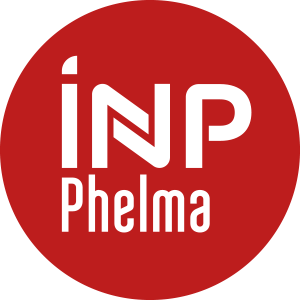Number of hours
- Lectures 18.0
- Projects 0
- Tutorials 0
- Internship 0
- Laboratory works 0
ECTS
ECTS 1.5
Goal(s)
Nuclear Magnetic Resonance allows on one hand to study the structure and the dynamics of molecules (NMR spectroscopy) and, on the other hand, to image in 3D the nuclear magnetization (Magnetic Resonance Imaging MRI). MRI is a diagnostic tool of utmost importance in medicine. Its application in neurosciences allows to study how the human brain works. The scope of applications and their rapid development make MRI one of the most used medical imaging techniques. The objective of this course is to understand its physical basis, to discover its technical implementation with examples of applications in medicine.
Contact Charlotte VENDRELY, Thomas CHRISTENContent(s)
- Physical basis of NMR
- Principles : nuclear magnetism, resonance, relaxation
- Signal processing and instrumentation
- Main NMR sequences
- Interactions of nuclear magnetic moments with their environment, analysis of NMR spectra of simple molecules
- Relaxation phenomena
- Magnetic resonance imaging.
- Principle of spatial encoding
- Setting of geometric parameters
- A few MRI sequences
- Main contrasts
- Example of applications and artefacts
- Applications in medicine
- Practical work : Simulations of MRI signals, multi-dimensional Fourier transform, spatial frequencies
Prerequisites
Fourier transform
Semester 8 - The exam is given in english only 
Type of assessment: written exam
Duration: 2 hours
Conditions: 1 handwritten sheet of paper with a summary of the course is allowed, no other documents are allowed.
Calculator: allowed
session 2 normal condition :
type of exam: specify DS or oral or report etc...
duration :
modalities :
calculator :
session 1 confined condition :
type of exam: specify DS or oral or report etc.
duration :
terms and conditions :
session 2 condition confinement :
type of exam: specify D
session 1 condition normale : 100% DS
session 2 condition normale :
session 1 condition confinement :
session 2 condition confinement :
Semester 8 - This course is given in english only 
M.H. Levitt Spin Dynamics : Basics of Nuclear Magnetic Resonance (Wiley 2001)
D. W. McRobbie et al MRI From picture to Proton (Cambridge University Press, 2007)



